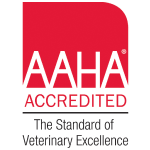A Healthier Future for Your Furry Friends
We organize, prepare, and try to make plans for every contingency to protect our family. To do so, we have car insurance, home insurance, medical insurance, and life insurance. Try as we might, the unexpected or even emergencies can’t be avoided; that’s life. If you’re like most pet owners, our beloved animal companions are more than just pets; they’re members of the family. Like the rest of our family members, pets can also face unexpected health issues and accidents. That’s where pet insurance comes in, and September is the perfect time to shine a spotlight on this essential aspect of pet care—National Pet Insurance Month.
Pet insurance has a lengthy history worldwide. The first policy was written in Sweden over a hundred years ago and covered livestock and horses. The first pet insurance policy written in the US was for the television dog, Lassie, and was written in 1982. Since then, pet insurance policies have become more widely utilized by pet owners to provide the best, most comprehensive care for their pets.
What and How
A pet insurance policy covers part of veterinary care expenses for your pet. Most policies are written to cover accidents or accidents and illnesses, but some also cover preventive and wellness care. The cost of your pet’s policy is based on a variety of factors, including:
- Species (insurance for dogs is more expensive than insurance for cats)
- Age of pet
- Your pet’s breed (Maine coon cats and French bulldogs have the highest monthly premium)
- Insurance deductible
- Reimbursement rate
- Your state of residence
Your pet’s medical insurance is similar to your family’s medical insurance in that similar terms and rules apply. Your pet’s medical insurance may have:
- A deductible (the amount you pay before insurance begins to cover expenses)
- A reimbursement amount (the percentage your pet’s insurance pays back to you for qualifying expenses – usually 70% to 90% of covered costs)
- A waiting period (the length of time between when the coverage begins and when all conditions or certain conditions are covered)
- A premium (the amount of money you pay for the policy either monthly or annually)
These amounts are dependent on the plan and insurer you choose. Although some pet insurance plans pay the vet on your behalf at the time of service, most pet insurance plans require you to pay your pet’s veterinary costs upfront and receive reimbursement from them. Most plans allow you to go to the veterinarian of your choice, but you should confirm those details when you purchase your plan.
Caring For Your Furry Friend
South Hyland Pet Hospital located at 5400 W Old Shakopee Rd., Minneapolis, MN, recommends that you purchase pet insurance to help defray unexpected health care costs for your pet. While approximately two-thirds of US households include a pet (or two), only about 4% of dogs and 1% of cats are insured. Accidents and illnesses experienced by your furry friend can be costly to treat, so we recommend that you plan for your pet’s healthcare needs in the same way you plan for your family’s.
South Hyland Pet Hospital
We’re available to care for your pet for all their needs, wellness, or illness. Our veterinary medical team works with you and your beloved animal companion to ensure that you enjoy a good long life together.



